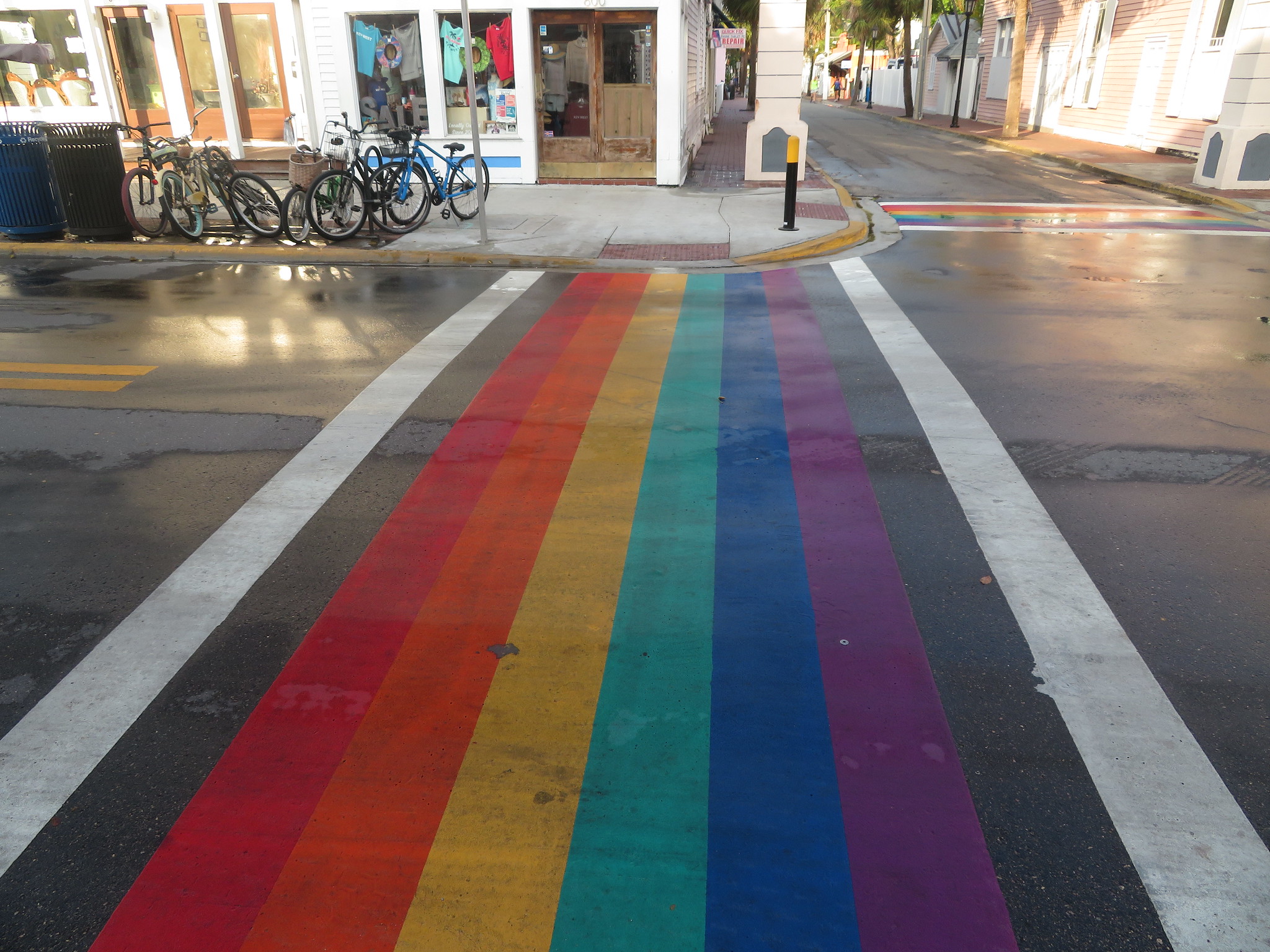Departments of transportation can and must do more to protect a particularly vulnerable group: the unhoused people who take shelter on and alongside American roads, a new federally-funded report argues.
In a new meta-analysis funded in part by the US Department of Transportation, a team of researchers at the University of California Los Angeles scoured hundreds of studies, all 50 states’ DOT websites, and a range of original interviews to understand how transportation officials respond to safety concerns about encampments on land that agencies own — and how they can do better.
That starts, the researchers said, by acknowledging that unhoused people themselves are people, rather than a safety "problem." And many of them have good reason to feel more safe and welcome in the right-of-way than other places — including many shelters.
"DOTs do tend to frame [this issue] as a safety problem, and they’re not wrong; these are often dangerous environments, particularly for unhoused people themselves," said Jacob Wasserman, who co-authored the study. "But there are benefits, too. [Highway overpasses] are often sheltered environments where people can congregate, find community, have eyes on the street. In more rural encampments, it’s a place away from neighbors who might otherwise harass them. There are many rational reasons why someone who doesn’t have shelter would end up [on DOT-owned property]."
That property includes a wide variety of potentially perilous off-road spaces — think underpasses, overpasses, parking lots, rest areas and road maintenance facilities — in addition to the more obvious dangers that drivers pose to the houseless on streets and sidewalks. One Portland study found that a shocking 70 percent of pedestrians who died in the Oregon community in 2021 didn't have permanent housing at the time they were killed, and journalists in other communities have uncovered similar trends, despite the fact that not many governments collect reliable data on the housing status of crash victims.
The UCLA researchers say that's in part because transportation officials don't always view the national homelessness crisis as their problem to solve — even when their agency's decisions helped create and prolong it.
"Homelessness is first and foremost a housing problem, but transportation is so intimately tied into housing," said Wasserman. "People can only live in places they can afford, which is sometimes really far from [the things they need to reach] because of our transportation decisions. Then we have to talk about the history of the interstate highway system, and how state DOTs played such a huge role in reducing the housing stock, evicting people, and giving them very little relocation assistance. … DOTs have to respond to homelessness because, like it or not, those people are there, on their land and under their aegis. Some agencies have eagerly embraced that role — but many have not."
Just because they replaced high-rises with highway overpasses, though, doesn't mean that DOT leaders necessarily know how to help the people that end up living underneath them. Here are three recommendations they say can help.
1. Get more data
DOTs don't just lack data on how many unhoused people die while walking. They also don't know how many unhoused people are living on the streets, period — or what solutions might put them on a path to other forms of shelter.
Wasserman explains that the federal Department of Housing and Urban Development mandates an annual nationwide "homeless assessment report," but that count only occurs on a single day, and doesn't disaggregate between people found living on DOT land, private property, or in other settings. State-specific counts, meanwhile, are often prompted by complaints to law enforcement, which don't provide a comprehensive picture, either.
"As a researcher, it’s not surprising that I’m going to be advocating for more data," he jokes. "But how are we going to say that a given strategy is working or not working if we don’t regularly [take measurements]?"
Wasserman says that regular counts could double as an opportunity to collect qualitative data about how to better serve these populations, rather than offering them solutions they might not want or even be able to use. A recent RAND corporation study, for instance, found that 40 percent of unhoused people surveyed in Los Angeles were uncomfortable moving into shelter settings with no privacy, while 35 percent felt unsafe in the specific accommodations they are offered; another 29 percent, meanwhile, simply struggled with the paperwork necessary to enter a shelter environment.
"We need to ask: why would people take shelter under freeways?" he adds. "What are people looking for in alternate shelters? Pairing counts with deeper interview based survey process is so essential."
2. Staff up and reach out
Transportation leaders aren't usually trained as social workers. But that doesn't mean that they can't help the unhoused — or connect them with people who can.
In addition to creating a dedicated "homelessness coordinating office" within their own departments, the UCLA researchers recommend that DOTs also formalize partnerships with homeless nonprofits and service providers who are best equipped to work with encampment residents day-to-day — and it's usually not enough to do one without the other.
"DOTs should probably provide a baseline level of training to their frontline workers on homelessness and humane ways to talk to and interact with unhoused people on their property," added Wasserman. "When it comes to making repeat visits to encampments, building trust with unhoused people, giving [them] proof that your interventions are actually going to put them on a path to stability — that work is probably best done by service providers."
3. Stop (most of) the sweeps
The phrase "stop the 'sweeps'" — aka, forcible encampment removals — has become a rallying cry among advocates for unhoused people across the country. And the UCLA researchers largely agreed with their catch phrase.
"The studies we reviewed show that by and large, enforcement actions don’t work," Wasserman added. "They can lead to temporary clearance of an area, but our interviewees, pretty much to a person, said that unhoused people would just come back, at the very least to nearby areas. Maybe a site could be secured with hostile architecture, but we have to ask: is that really solving the problem? Are we just pushing people to take shelter somewhere else — and is it somewhere worse?"
Wasserman emphasized that the action of dismantling an encampment can itself be violence including "not just physical violence [from police], but destruction of property, of medication, and loss of community."
And while they "don't recommend them as 'best practices' per se," the researchers point out that some DOTs have had more success with "categoriz[ing] encampments based on health and safety risks and disruption to infrastructure, clearing high-priority encampments and deprioritizing others — or, in some cases for a time, even letting them remain." Others have even made unsafe encampments safer by providing sanitation stations, needle exchanges, Narcan kits, and other services.
"I can certainly imagine there’d be pushback from some people in the community, who might say, 'that’s just condoning encampments,'" Wasserman adds. "But if people have nowhere else to go, it's still the DOT's responsibility — and potentially their legal responsibility — to make [that place] safer ... We can develop these conversations with unhoused folks themselves, and say, 'okay, this is where we need to focus our efforts because there’s a real danger here — and this is where, until we come up with fixes to our housing market, we should let people stay."






